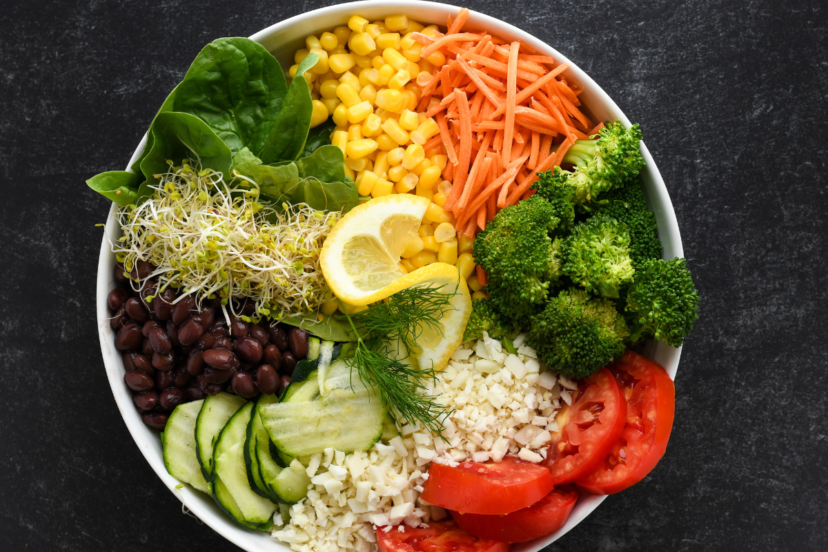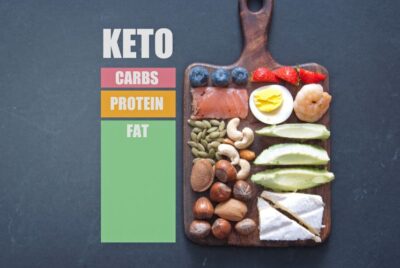Vegetarian Keto Diet: Low-Carb Meets Plant-Based Living
Combining a vegetarian lifestyle with the keto diet may sound challenging at first—but it’s absolutely doable with the right knowledge and planning. The vegetarian keto diet is a low-carb, high-fat diet that eliminates meat while still promoting ketosis, the metabolic state where your body burns fat for fuel instead of carbohydrates.
Whether you’re motivated by ethics, health, or both, this guide breaks down how to do vegetarian keto effectively—without missing out on nutrition or flavor.
What is the Vegetarian Keto Diet?
The vegetarian keto diet is a way of eating that combines two things: a low-carb diet, high-fat keto diet, and a vegetarian lifestyle that excludes meat, poultry, and fish.
Instead of getting protein and fat from animal meats, you’ll rely on:
- Eggs and dairy (if not dairy-free)
- Plant-based proteins like tofu, tempeh, and seitan
- Healthy fats like avocado, nuts, seeds, and olive oil
- Low-carb vegetables such as spinach, zucchini, and broccoli
The goal is to keep your carbs very low (usually under 20–50 grams per day) so your body enters ketosis, burning fat for fuel instead of glucose.
People choose vegetarian keto for weight loss, better blood sugar control, mental clarity, or ethical reasons. It takes some planning—especially to get enough protein and nutrients—but it’s 100% possible and can be delicious!
Vegetarian Keto-Friendly Foods
Here’s a list of foods to build your meals around:
| Fats & Oils | Protein Sources | Low-Carb Vegetables | Extras |
| Olive oil | Eggs | Spinach, kale, arugula | Herbs, spices, lemon juice, vinegar |
| Coconut oil | Full-fat dairy (cheese, Greek yogurt, cream) | Broccoli, cauliflower | Coconut milk |
| Avocados | Tofu and tempeh | Zucchini, bell peppers | Unsweetened almond or soy milk |
| MCT oil | Seitan (in moderation; contains gluten) | Mushrooms | |
| Ghee (if you eat dairy) | Low-carb protein powders (pea, hemp, rice) | Cabbage, Brussels sprouts | |
| Nuts and seeds (chia, flax, hemp, almonds, walnuts) |
Tips for Success on a Vegetarian Keto Diet
Track Your Macros: Use a keto app to make sure you’re hitting your protein and fat targets without going over your carb limit.
Prioritize Complete Proteins: Mix different plant-based proteins (like tofu + hemp seeds) to get all essential amino acids.
Watch Nutrient Deficiencies: Consider supplements for vitamin B12, iron, omega-3 (ALA, DHA), and zinc, especially if you’re also avoiding eggs and dairy.
Plan Meals in Advance: Meal prepping helps avoid carb-heavy traps and ensures a variety of nutrients throughout the week.
Experiment with Recipes: Try vegetarian keto recipes like zucchini noodles with creamy avocado sauce, cauliflower rice stir-fries, or eggplant lasagna with cheese.
6 Benefits of the Vegetarian Keto Diet
Choosing a vegetarian keto diet can bring you the best of both worlds—plant-based living and the powerful effects of ketosis. Here’s why many people love it:
1. Weight Loss: Low carbs and higher fat keep you full longer, help reduce cravings, and encourage fat-burning for energy.
2. Stable Blood Sugar: Cutting out sugar and starches keeps your blood sugar steady, which can help manage insulin resistance and type 2 diabetes.
3. Better Mental Clarity: Many people experience sharper focus and fewer energy crashes when their brain runs on ketones instead of glucose.
4. Heart Health: A well-planned keto diet focuses on healthy fats (like olive oil, nuts, and avocado) that may support heart health.
5. Anti-Inflammatory Benefits: Lowering carbs and emphasizing whole, plant-based foods can help reduce inflammation throughout the body.
6. Ethical and Environmental Benefits: Sticking to a vegetarian lifestyle aligns with many people’s ethical choices and can have a lower environmental impact.
FAQ: Vegetarian Keto Diet
1. Can you do keto without eating meat?
Absolutely! That’s exactly what the vegetarian keto diet is all about. You’ll replace meat with plant-based proteins like tofu, tempeh, eggs, and low-carb dairy while keeping carbs low enough to stay in ketosis.
2. What can vegetarians eat on a keto diet?
Plenty! Think eggs, cheese, Greek yogurt (unsweetened), avocado, nuts, seeds, olive oil, coconut oil, tofu, tempeh, and lots of low-carb veggies like spinach, zucchini, and cauliflower. Just avoid high-carb foods like grains, starchy veggies, and most fruits.
3. Is the vegetarian keto diet healthy?
For many people, yes. It can support weight loss, better blood sugar control, and even mental clarity. But it’s important to plan carefully to get enough protein, vitamins like B12, iron, and omega-3s. Talk to your doctor if you have specific health concerns.
4. How many carbs can I eat on a vegetarian keto diet?
Typically, people aim for 20–50 grams of net carbs per day to stay in ketosis. That means you’ll need to choose low-carb veggies and be cautious with higher-carb vegetarian proteins like beans or lentils.
5. What are the biggest challenges with vegetarian keto?
The toughest parts are:
Getting enough protein without going over on carbs
Avoiding too much cheese and dairy, which can cause keto bloating
Ensuring you get enough nutrients like B12, iron, and zinc
Planning ahead and using tools like keto meal prep containers can help you stay on track!





Comments are closed.